Bigger, faster, hotter Understand article
Science in School is published by EIROforum, a collaboration between eight of Europe’s largest inter-governmental scientific research organisations. This article reviews some of the latest news from the EIROforum members (EIROs).

EIROforum
- EIROforum combines the resources, facilities and expertise of its member organisations to support European science in reaching its full potential.
CERN: The masters of the Internet – and you can be one, too!
Although a lot of people know that the World Wide Web was invented at CERN, not many know that the organisation has also played a central role in developing the Internet in Europe. In 1988, CERN convened the historic meeting that led to the creation of the RIPE (Réseaux IP Européens), which still allocates IP addresses in Europe. In the early 1990s, CERN was the largest Internet hub in Europe, managing more than 80 % of the international bandwidth available on the continent.
from right) participating in a
round-table discussion at the
INET 2012 forum in Geneva
Image courtesy of CERN
It was also one of the founding members of the Internet Society, a global organisation dedicated to ensuring that the Internet stays open, transparent and defined by its users. The society celebrated its first 20 years at a conference held in Geneva, Switzerland, from 22 to 24 April 2012, with CERN as a special guest.
- To mark the occasion, the Internet Society established a website where people can share their ideas and wishes on how the Internet should evolve.
Get involved, and make the Internet your place, too!
- Find out more about the Internet Society.
- Based in Geneva, Switzerland, CERN is the world’s largest particle physics laboratory.
EFDA-JET: Refurbished JET – clean, hot and safe
Fusion energy researchers at the Joint European Torus (JET) continue to reap rewards from the 2009-2011 upgrade. The new metallic walls in the reactor have led to much cleaner plasma, without the undesirable radiation caused by contaminants from the previous carbon wall. In addition, the new heating systems can deliver 40 % more power to the plasma in 50 % longer pulses.

inside of the JET vessel
shows hot spots (reddish)
during a plasma disruption
Image courtesy of EFDA-JET
Nonetheless, turbulent events known as disruptions – in which the energy of the plasma escapes its magnetic cage in one spot and hits the wall – still occur occasionally. Because the new wall has a lower melting point than the previous one and higher plasma temperatures are now being used, a protection system had to be developed before the full heating power could be applied. This will mitigate disruptions because the associated heat levels and magnetic forces can be extremely high.
Recent tests have shown that the protection system successfully detects disruptions and then quickly puffs argon gas into the vessel.
The argon rapidly ‘contaminates’ the plasma, radiating energy in all directions, thereby diffusing the hot spot. The JET team now has the confidence to turn the new system up to record power levels in the coming months.
- To find out how hot spots and other potential problems are monitored within the JET reactor, see:
Dooley P (2012) Seeing the light: monitoring fusion experiments. Science in School 24: 12-16. - Situated in Culham, UK, JET is Europe’s fusion device. Scientific exploitation of JET is undertaken through the European Fusion Development Agreement (EFDA).
EMBL: Filming life in the fast lane
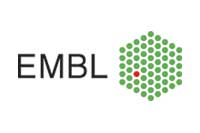
Scientists at the European Molecular Biology Laboratory (EMBL) have filmed the development of a fruit fly embryo from when it is about 2.5 hours old until it crawls away from the microscope as a larva, 20 hours later. In the video, you can watch as cells on the embryo’s belly dive in to form what’s known as the ventral furrow. Other cells can then be seen moving around the embryo’s rear end to its back, in a process called convergent extension. Later, when an opening appears in the embryo’s back, you can see the surrounding cells close the gap in a process known as dorsal closure.
embryo with the cell nuclei
marked. Background: an
unrolled image of a
Drosophila embryo with the
cell membranes marked
(the alternating green /
magenta colour represents
different views from the
microscope)
Image courtesy of Uroš Kržič /
EMBL Heidelberg
To obtain the video, the scientists developed a new microscope called multi-view SPIM, which enables them to image rapid biological processes in thick samples in unprecedented detail. They can obtain a high-quality 3D image of a fruit fly embryo in just a few seconds. Using such fast imaging, the movements of every nucleus in the early embryo can be recorded.
In the future, the scientists would like to use their new microscope to investigate how organs and tissues form, not only in the fruit fly but also in other organisms.
- To watch the video and for more information about the microscope, see the press release on the EMBL website.
- To watch other EMBL videos, see the EMBL Youtube channel.
- The original publication is:
Krzic U et al. (2012) Multi-view selective-plane illumination microscope for rapid 3D imaging of developmental processes with sub-cellular resolution. Nature Methods 9: 730-733. doi: 10.1038/NMETH.2064 - For an earlier Science in School article about how embryo development is observed at EMBL, see:
Furtado S (2010) Watching it grow: developing a digital embryo. Science in School 15: 18-22. - EMBL is Europe’s leading laboratory for basic research in molecular biology, with its headquarters in Heidelberg, Germany.
ESA: Join the asteroid hunt

The European Space Agency (ESA) has recently joined forces with the UK’s Faulkes Telescope Project to allow students to support the Agency’s Space Situational Awareness (SSA) programme. This programme keeps watch over space hazards, including disruptive space weather, debris objects in Earth orbit and asteroids that pass close enough to Earth to cause concern.

Telescope North and the
Milky Way
Image courtesy of Nik
Szymanek / FT / LCOGT
Any attempt to survey and catalogue hazardous asteroids faces a number of difficulties. They are often jet black or at least very dark, can approach rather too close before anyone sees them, and are often spotted only once and then disappear before the discovery can be confirmed.
So ESA is turning to amateur astronomers to ‘crowd-source’ observations as part of Europe’s contribution to the global asteroid hunt. These efforts will greatly enhance asteroid-spotting for the SSA programme, enabling detection of fainter objects and tracking from a global telescope network.
The Faulkes Telescope Project offers free access to robotic telescopes and a fully supported education programme to encourage teachers and students to engage in research-based science education.
Supporting ESA’s SSA programme is just one of the many possible astronomy projects that schools can engage in.
- Go to the Faulkes Telescopes website to join the hunt.
- To learn more about using the Faulkes Telescopes at school, see:
Dodds R (2007) The Faulkes Telescopes: real-time, remote-control astronomy for schools. Science in School 4: 42-45. - For another asteroid-hunt teaching activity, see:
Newsam A, Leigh C (2011) Hunting for asteroids. Science in School 20: 30-35. - ESA is Europe’s gateway to space, with its headquarters in Paris, France.
ESO: World’s biggest eye on the sky

The European Southern Observatory (ESO) is to build the largest optical / infrared telescope in the world. The ESO council approved the European Extremely Large Telescope (E-ELT) programme at its meeting in Summer 2012, pending confirmation of four ad referendum votes. The E-ELT will be a 39.3 m segmented-mirror telescope sited on Cerro Armazones in northern Chile, close to ESO’s Paranal Observatory.
in its enclosure on Cerro
Armazones, a 3060 m
mountaintop in Chile’s
Atacama Desert
Image courtesy of ESO /
L Calçada
Operations are planned to start early in the next decade, and the E-ELT will tackle some of the biggest scientific challenges of our time. “The E-ELT will keep ESO in a leading position for decades to come, and lead to an extraordinary harvest of exciting science,” said ESO council president, Xavier Barcons.
- For more information, see the press release.
- ESO is by far the world’s most productive ground-based astronomical observatory, with its headquarters in Garching near Munich, Germany, and its telescopes in Chile.
ESRF: When insects first became pollinators

Insect pollination of plants is a relatively recent event in Earth’s history – water and wind did the job before the little creepy-crawlies arrived. But once they did, a mutual evolutionary success story started: today, by far the majority of flowering plant species are pollinated by insects, which transport the pollen from male to female plant parts. But how did it all begin?
Flowering plants are a comparatively recent group, evolving from gymnosperms. These ‘naked seed’ plants have cones instead of flowers, and include today’s conifers and Ginkgo. Although most gymnosperms used wind pollination, some already used insects as pollinators – well before the evolution of the first flower.

image of a specimen of
Gymnospollisthripsminor
covered with pollen grains
(yellow). These grains are
minuscule and exhibit
adherent features so that
insects can transport them
Image courtesy of ESRF
Two pieces of amber some 110 million years old from northern Spain revealed the oldest record of insect pollination, when scientists used X-rays at the European Synchrotron Radiation Facility (ESRF) to produce detailed images of two newly described species of tiny insects covered with pollen grains. Gymnopollisthrips minor and Gymnopollisthrips maior are thrips (Thysanoptera), minute insects that feed on a variety of plant and animal sources, including pollen. These particular thrips are thought to have fed on the pollen of Cycadopites, a now extinct genus of gymnosperm that is related to cycads – the plants that look like a giant cross between palm and fern trees and make up the ‘forests’ in dinosaur films.
- To learn more, see the news item on the ESRF website, or read the research paper:
E Peñalver et al. (2012) Thrips pollination of Mesozoic gymnosperms. Proceedings of the National Academy of Sciences of the United States of America 109(22): 8623-8628. doi: 10.1073/pnas.1120499109 - Situated in Grenoble, France, ESRF operates the most powerful synchrotron radiation source in Europe.
European XFEL: The diggers are done

European XFEL has reached an important milestone. The construction of the network of tunnels, totalling nearly 5.8 km in length and extending 3.4 km from Hamburg-Bahrenfeld to Schenefeld in Schleswig-Holstein, Germany, is now finished.
As Professor Massimo Altarelli, managing director of European XFEL, commented, “The tunnel construction is one of the most difficult building phases.

tunnel-boring machine
AMELI in the final reception
shaft on 4 June 2012
Image courtesy of European
XFEL
We are glad that this task could be completed according to plan, and that we could keep costs within the tight budget we set at the time the contract was awarded.”
Tunnel construction began in July 2010. In January 2011, a second boring machine started to excavate the five photon tunnels leading into the experiment hall. On 14 June 2012, more than 400 people – including guests from politics and science as well as staff from collaborating companies – celebrated the completion of the tunnel construction.
- European XFEL is a research facility currently under construction in the Hamburg area in Germany. It will generate extremely intense X-ray flashes for use by researchers from all over the world.
ILL: Celebrating the neutron’s 80th birthday

This year, the world’s flagship neutron science facility marks the 80th anniversary of James Chadwick’s famous discovery. On 1 June 2012, it will be 80 years since the publication of Cambridge physicist James Chadwick’s famous Nobel Prize-winning paper, which proved the existence of the neutron. Chadwick’s discovery led to the development of neutron research, which continues to make breakthroughs across the sciences.
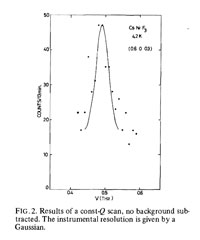
ILL, submitted in 1972
(Steiner & Dorner, 1973)
This year also marks the 40th anniversary of the use of Chadwick’s famous particles at the Institut Laue-Langevin (ILL).
As Professor Andrew Harrison, director general of the institute, explains: “Thanks to Chadwick’s discovery and the technology developments that have taken place since, ILL can use neutrons as if they were super X-rays, to understand the world at the atomic level and make discoveries that improve our lives. The neutrons we produce and the world-leading instruments that detect them are delivering impact in areas as varied as health care, the environment and engineering, as well as improving our fundamental knowledge of how the world works.”
- See the research paper describing the first published results from ILL:
Steiner M, Dorner B (1973) Spin wave measurements in the one-dimensional ferromagnet CsNiF3. Solid State Communications 12(6): 537-540. doi: 10.1016/0038-1098(73)90652-2 - ILL is an international research centre at the leading edge of neutron science and technology, based in Grenoble, France.

